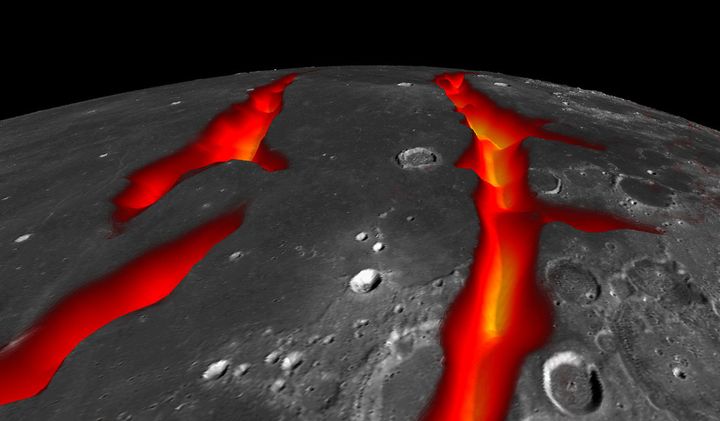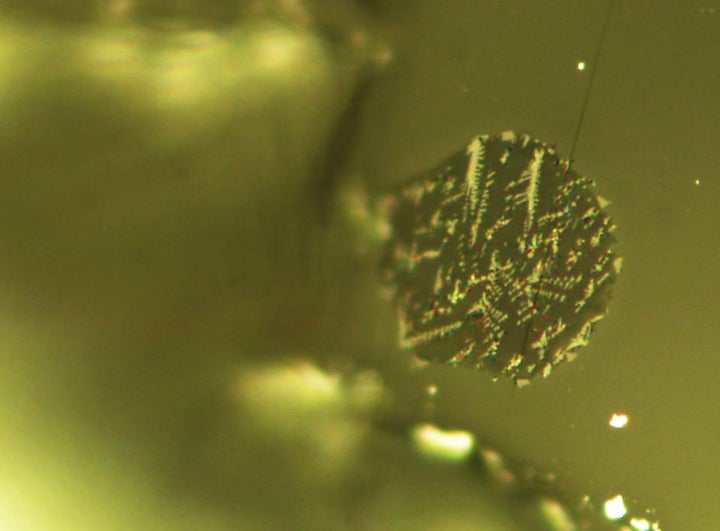
An artist's concept of Earth's moon, representing how some volcanic structures may have looked while active.
Scientists from Brown University and the Carnegie Institution for Science just solved a moon mystery decades in the making.
We have long known that the moon was once home to "fire fountains," a type of volcanic eruption driven by rapidly expanding gas. Astronauts on the Apollo missions in the '70s found hardened beads of glass that were proof of these fiery geysers. But scientists were never quite sure exactly which volatile gas caused fountains -- until now.
A new study published in the journal Nature Geoscience on Monday finds that carbon caused the moon eruptions when it mixed with oxygen to form expanding carbon monoxide gas.
"The carbon is the one that is producing the large spectacle," Dr. Alberto Saal, associate professor of planetary sciences at Brown University and co-author of the new study, said in a statement.

Fire fountains also occur on Earth, mostly in Hawaii, but are caused by expanding water and carbon dioxide, not monoxide. This 33-foot high fire fountain erupted from a vent south of Pu‘u Kahaualea in Hawaii.
For the study, the researchers analyzed the glass beads collected during the Apollo missions and looked for any magma that might have been trapped inside them when they cooled. And -- voila -- the magma they found had traces of carbon monoxide in it.
Since the researchers found much higher levels of carbon in the beads with trapped magma than in the moon's volcanic glass overall, they concluded that the carbon monoxide must have been responsible for the fire fountains, Space.com reported.

Microscopic bits of molten magma became trapped in glass crystals, preserving evidence of volatile gases. The crystals trap gases present in the magma before they can escape.
The finding not only sheds new light on the moon's old fire fountains, but also serves as more evidence that our planet and its satellite have a lot in common. The amount of carbon detected in the beads was very similar to the amount found in volcanic rocks on Earth.
This new study adds to previous findings that the moon may have formed out of leftover debris when Earth was hit by a Mars-sized object.
"The volatile evidence suggests that either some of Earth’s volatiles survived that impact" and helped create the moon, Saal said, "or that volatiles were delivered to both the Earth and Moon at the same time from a common source — perhaps a bombardment of primitive meteorites."
For the full story of how Earth got its moon, check out the "Talk Nerdy To Me" episode below.
